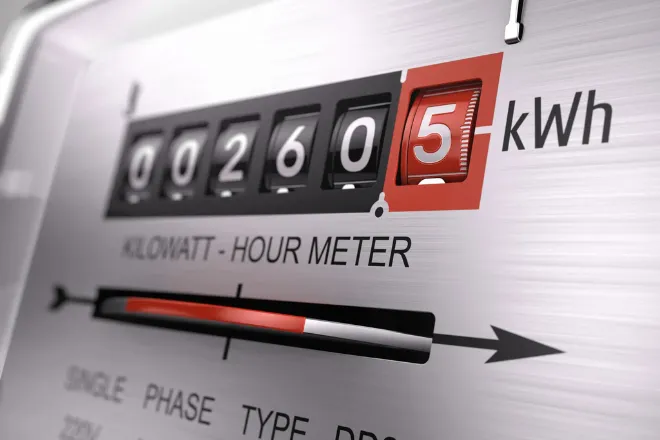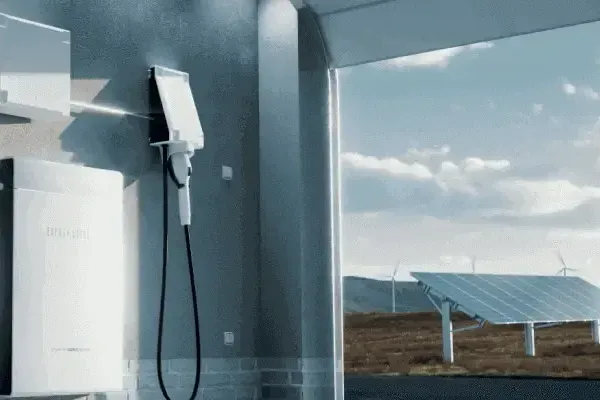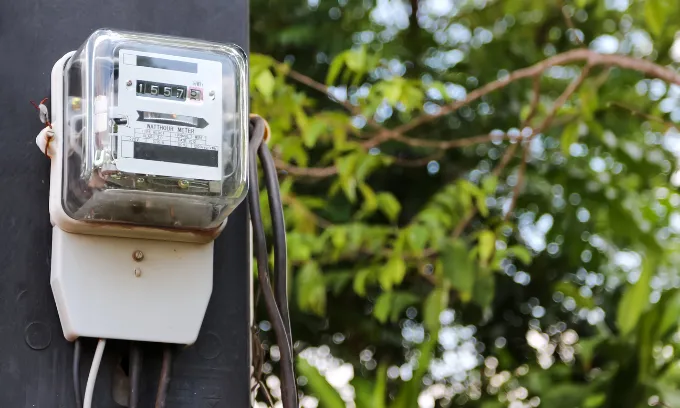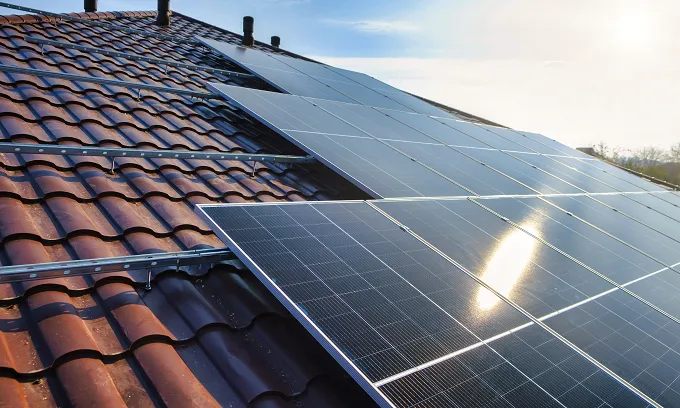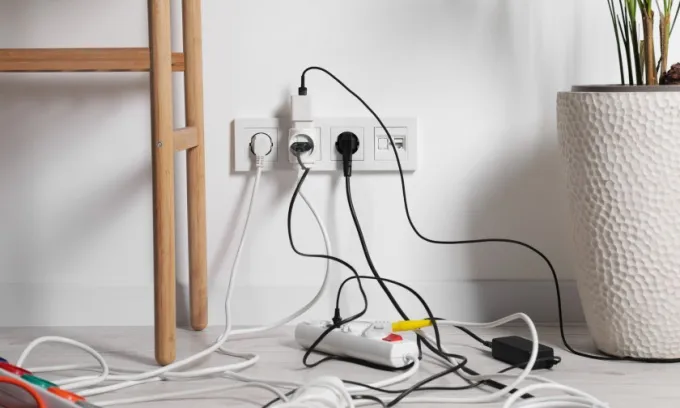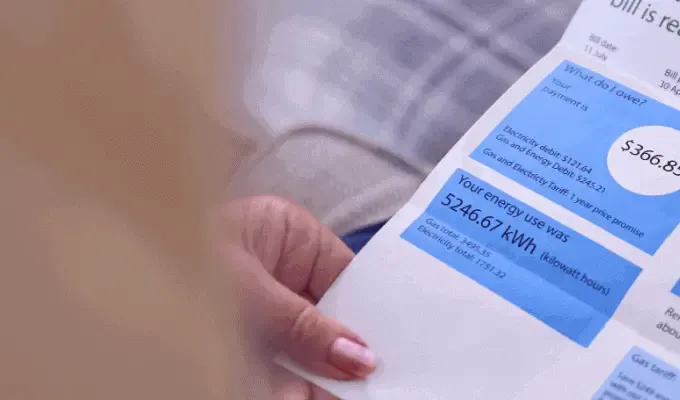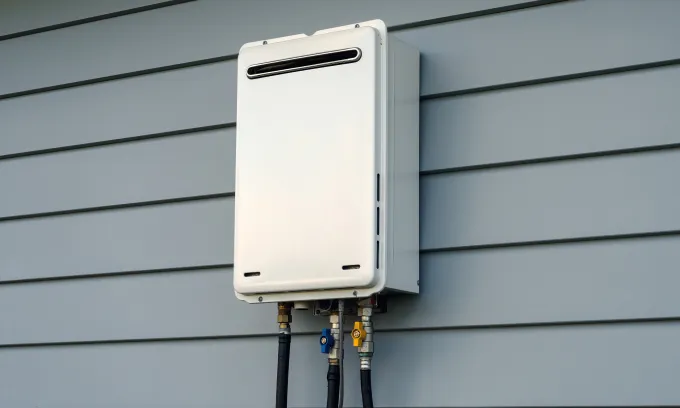How energy in the ACT works
The Australian Capital Territory (ACT) market consists of two main types of energy — electricity and gas.
If you’re keen to have either supplied to your home, you’ll need to pick an energy provider and a plan. An energy provider buys energy in bulk from the wholesale market, reselling it to customers. This resold energy is repackaged into ‘plans’ with different rates, terms and conditions.
The ACT energy market is ‘deregulated’, permitting the unrestricted entry and exit of providers keen to compete on selling energy. More importantly, providers have the near-complete freedom to sell plans with prices and conditions they set.
For the customer, this means you’re also empowered to choose what’s best for your living situation. But before you shop around, it’s best to understand what makes the ACT energy market tick.
This guide shines a spotlight on the key aspects of the ACT energy market.
Why compare energy in the ACT?
Comparing energy plans is cost-free and fuss-free — it is a golden opportunity to save lots of money by switching to the cheapest energy plan.
Electricity in the ACT explained
Electricity distributors in the ACT
An electricity distributor is responsible for piping electricity to your homes — a provider sells electricity, while a distributor supplies it. This definition also applies to gas.
The ACT has one major electricity distributor — Evoenergy. However, Essential Energy, another distributor, may service some customers outside Canberra.
Evoenergy serves over 200,000 residential and business customers in the Bush Capital.
It’s good to know your distributor’s phone number in the event of a damaged utility pole or power outage.
Electricity plans in the ACT
In the ACT, there are two types of electricity plans on offer — ‘standing offers’ or ‘market offers’. Every energy plan measures your running electricity use in kilowatt hours (kWh).
Their annual estimated prices are based on a general usage estimate of the average ACT customer. This figure is calculated by the Minister for Water, Energy Emissions Reduction and the Treasurer.
For example, the annual usage estimate in the Evoenergy network is 6,100 kilowatt hours (kWh) a year.
Market offers
Market offers are plans set by ACT providers with competitive rates and discounts to attract new sign-ups. To be on a market offer, you must sign up for one.
Things to know:
- Market offers have a fixed contract length (usually twelve months) before expiring.
- Most market offers are variable rate plans, meaning providers can increase their rates before they expire.
- A fixed rate plan freezes rates during the length of its contract, but they are rare.
- Discounts are valid during a plan’s contract length or benefit period — this can be found on its energy fact sheet.
Standing offers
Standing offers are the plans customers are moved onto when their previous market offer (if any) expires.
Standing offers follow the ACT reference price set by the Independent Competition and Regulatory Commission (ICRC), which changes on July 1st.
However, keep in mind that the standing offer regulation only applies to one electricity provider, ActewAGL. This protects ActewAgl customers whose market offer has expired from sky-high electricity prices.
For all providers, the reference price is also a benchmark to compare market offers against. By law, any price differences must be displayed as a percentage (%).
Things to know:
- If you’re on a standing offer, you’re likely paying the maximum a retailer can charge you. This is not considered good value.
- Market offers can be priced more than standing offers, but this does not happen often.
- There is no contract length, so you can stay on a plan indefinitely.
- Standing offers don’t offer discounts.
The cheapest electricity plans in the ACT
Below are the current cheapest single-rate electricity plans in our database on the Evoenergy network in the ACT.
Provider | Plan name | Est. annual cost (inc. all discounts) | Est. annual cost (ex. conditional discounts) | Reference price comparison (Basic Plan Information) |
|---|---|---|---|---|
Origin Energy | Go Variable (Rate 1) | $2,033 | $2,033 | 24% less |
Red Energy | Living Energy Saver (020) | $2,119 | $2,119 | 21% less |
ActewAGL | Direct Saver plan | $2,250 | $2,250 | 16% less |
Energy Locals | Online Member (Rate 1) | $2,490 | $2,490 | 7% less |
Electricity prices and rates in the ACT
In every electricity plan, you’ll find two charges — ‘supply charges’ and ‘usage charges’
- Supply charges: A fixed cost (in c/day) you pay to remain connected to the grid.
- Usage charges: A variable cost for every kWh of electricity you use.
However, electricity plans can vary in tariff type, which are pricing structures providers follow to design their plans. In the ACT, there are four common tariffs.
Tariff name | Description | Do you need a smart meter installed? |
|---|---|---|
Single rate | A fixed rate regardless of the time of day you use electricity. | No |
Controlled load (CL) | Power-intensive appliances (e.g. hot water systems) are metered separately from the rest of your home. | Yes |
Time of use (ToU) tariff | Different rates in peak and off-peak periods. Rates are most expensive during peak hours and cheapest during off-peak hours. | Yes, or a separate CL meter installed instead. If you don’t have either, please contact your region’s distributor for one. |
Demand tariff | Supply and usage charges plus a ‘demand’ charge. | Yes. |
If you’re looking at a market offer, you’ll most likely see at least one or more of the following discounts:
- Conditional discounts: These are discounts offered if you meet certain criteria, such as opting for digital bills over paper. They might be included in the advertised price of a plan, but if you don't meet the conditions, you won't receive the discount.
- Dual fuel discount: Some energy providers give a discount if you sign up for both electricity and gas plans. While convenient, this doesn't always guarantee the best savings. You might find greater savings by having separate electricity and gas plans with different providers.
- Guaranteed discounts: This type of discount is applied without any conditions and is typically shown as a percentage off the plan’s listed price.
- Reward programs: Some plans include free access to reward programs where you earn points for every dollar spent on your bills. These points can usually be redeemed for various rewards such as in-store vouchers through the provider’s online portal.
All these charges and discounts can be found neatly outlined on a plan’s energy fact sheet.
On our energy comparison platform, you can easily view any plan’s fact sheet by clicking the ‘Basic Plan Information’ prompts on the results page.
How to find the best energy plans in the ACT
Here are some energy-savvy tips on picking the right electricity plan for you.
How much electricity do you use
Consider the volume of electricity your home uses:
- If you barely use electricity at all: A plan with lower supply charges will save you more money.
- If you use a lot of electricity: A plan with lower usage charges will lower your running electricity costs.
Be wary of hidden fees
Study your current plan’s energy fact sheet carefully — there could be hidden fees that you’re not aware of. For example, if you’ve switched electricity plans, a disconnection fee can leave you with sudden bill shock.
Don’t look at discounts alone
Never look at discounts in a vacuum. Generous discounts could be hiding much higher supply and usage charges, exceeding any of the savings promised.
Gas in the ACT explained
Gas distributors in the ACT
In the ACT, gas is mainly supplied by one major distributor: Evoenergy.
Gas distributors in the ACT | Network in the ACT | Regions in the ACT |
|---|---|---|
Evoenergy | The ACT Region network. | ACT, Queanbeyan, Jerrabomberra, Googong and Bungendore. |
The Nowra network. | Bomaderry and Nowra. |
In remote regions, other companies may be in charge of supplying gas.
Typically, you’ll only contact your gas distributor in these situations:
- To establish a new gas connection at your home for a fee.
- If there is a gas outage at home.
- If you want to submit a manual gas meter read.
Gas plans in the ACT
There are two types of gas contracts – ‘market offers’ and ‘standard retail contracts’.
Either plan tracks your gas usage in megajoules (MJ) instead of kWh.
Canstar’s comparison tools show an estimated annual usage, based on the average usage advertised by a selection of retailers — in this case, 33,200 MJ per year.
Market contracts
Market contract prices, like electricity market offers, are retailer-set with their own rates, discounts and conditions.
Things to note:
- Market contracts either come with fixed or variable usage rates.
- Variable usage rates can change frequently.
- Fixed usage rates lock in rates before a market offer expires.
- You should compare variable plan pricing every 12 months.
Standing contracts
Standing contracts are regulated by the AER, shielding customers from overpaying for their gas use.
Things to note:
- Standing contracts typically represent the highest price a gas provider will charge you for your gas use.
- In theory, market contracts can be priced higher than standing retail contracts. However, this rarely happens.
- Standing contracts have no discounts.
- Standing contracts are indefinite, so you can stay on one as long as you want.
The cheapest gas plans in the ACT
Below are the current cheapest single-rate gas plans in our database on the Evoenergy network in the ACT.
Provider | Plan name | Est. annual cost (inc. all discounts) | Est. annual cost (ex. conditional discounts) | Basic Plan Information |
|---|---|---|---|---|
Origin Energy | Go Variable | $1,223 | $1,223 | |
Red Energy | Living Energy Saver | $1,320 | $1,320 | |
ActewAGL | Winter Saver 23% | $1,325 | $1,325 | |
Energy Australia | Flexi Plan | $1,468 | $1,468 |
Gas prices and rates in the ACT
Gas plans include similar charges to an electricity plan:
- Supply charges: A daily fee (in c/day) to maintain your gas connection.
- Usage charges: A cost that varies with the volume of gas you use (c/MJ).
Their usage charges can be split into two different tariffs — single rate and block rate tariffs:
- Single rate tariff: A flat rate for your gas use, regardless of the time of day.
- Block rate tariff: Customers are charged varied rates depending on the quantity of gas used. For gas, you’re typically charged a lower rate for each ‘block’. For example, a customer may be charged 4c/MJ for the first 20 MJ used, 2.7c for the next 20 MJ of usage, and 2.5c/MJ for the rest.
Depending on the gas plan, there may be additional discounts similar to what is offered on electricity plans.
All this information can also be found on a plan’s gas fact sheet. On our energy platform, you can also access each plan’s fact sheet by clicking on the ‘Basic Plan Information’ prompt.
How to find the best gas plans in the ACT
Knowing how you use gas
Think about how you use your gas before committing to any gas plan:
- Gas plans with lower supply charges are cheaper for homes that use less gas, while gas plans with lower usage charges may be better for homes that use a lot of gas.
- If your home uses little gas, a single rate tariff is the cheaper option.
- If your home uses a lot of gas, a block rate tariff may be more affordable.
Understanding gas discounts and hidden fees
Discounts on plans should not be assessed in isolation. In some cases, a higher discount could translate into higher electricity rates.
As for hidden fees, always be diligent when studying a plan's energy fact sheet.
Solar in the ACT explained
There’s no such thing as a solar plan that supplies you with 100% solar power.
Instead, your provider may reward you with a bill credit for your excess solar energy (a feed in tariff).
Solar feed in tariffs in the ACT
A solar feed in tariff (FiT) pays you a bill credit (in c/kWh) for excess solar exported from your rooftop solar to the grid.
Solar FiTs can be found attached to some standing offers and market offers, depending on your preferred provider.
Minimum solar feed in tariffs in the ACT
The ACT government does not set a minimum FiT rate. Instead, electricity providers in the ACT and Canberra are given free rein to offer their own FiT rates.
Premium solar feed in tariffs in the ACT
Premium solar FiTs, with rates between 30 and 45c/kWh, are no longer available to new customers.
Customers with solar systems installed pre-2011 can enjoy continued access to premium solar FiTs until July 2031. However, to maintain their eligibility, they cannot replace their pre-2011 systems.
Choosing the right solar feed in tariff in the ACT
Generous FiTs are always welcome, but they shouldn’t be the only thing you look at when comparing electricity plans.
- A high solar FiT could be masking more expensive usage and supply charges — you may be spending more than you’re earning from your FiT.
- Some solar FiTs offer higher rates for a capped amount of exported solar, before decreasing to a lower rate for the remainder (e.g. 10c/kWh for the first 15kWh per day, 2c/kWh after).
- If you’re thinking of installing solar to reap the rewards of FiT, consider its payback period — the time it takes for FiT earnings to cover the installation and purchase costs. You don’t want to end up spending more than you can save.
How to switch energy plans in ACT
Now that you understand how energy works in ACT, it’s time to switch.
Step 1: Check that you’re eligible to switch plans
If you rent or own your home, you should be able to switch plans or providers. The following examples might hinder you from being able to choose your own:
Electricity
- Embedded networks: If you live in an apartment complex, retirement village or caravan park, you may be living in an embedded network. This means that the site owner buys energy in bulk then sells it to residents. Some providers won’t offer energy to residents in an embedded network. If you’re not sure whether your building is in an embedded network, you can contact your site manager or body corporate.
- The landlord pays your bill: If your rent includes your energy bill and the account is in your landlord’s name, you may be unable to switch. You should find this information in your lease agreement.
Gas
- If your property isn’t connected to the gas main: If you’re not connected to the gas mains, you’ll need to connect to use natural gas appliances.. Contact your area’s gas distributor for more information on an initial connection, and be aware that it may come with a fee.
- If your home is not located close to a gas mains: Liquefied petroleum gas (LPG) may be an alternative for you. Keep in mind that natural gas-powered appliances cannot run on LPG.
Step 2: Have your current bill handy
Compare the discounts and rates of other available energy plans with your recent bill. Understanding what your current plan charges can help you find a plan that is a better value.
Your recent bills will give an estimate of how much electricity or gas you might use throughout the year. Understanding your energy needs are important when choosing a new plan that best suits you.
Step 3: Compare energy plans based on price
Using Canstar’s comparison platform, you can sort energy plans available in your postcode by price.
You can also filter these results for your specific needs:
- Bill details
- Billing periods
The results will provide you with an estimated annual cost and easy access to each plan’s fact sheet.
Step 4: Check tariff type, contract terms and FiTs
Understanding the energy your household uses will show you how you can benefit from different plans, tariff types and solar FiTs.
Weigh up the different options and don’t rush into a plan without understanding the contract terms and conditions on their fact sheets.
Step 5: Review your current plan’s exit fees
Your current plan’s fine print or fact sheet will show you whether there may be fees for contract termination or disconnection. Any fees will usually be added to your final bill.
Step 6: Sign up with your new provider
Once you have found the provider or plan for you, you can follow Canstar’s energy comparison platform through to your new provider’s website.
Switching will require a few extra steps:
Electricity
- You will need to provide your National Meter Identifier (NMI), which can be found on your electricity bills. Your NMI tells your new provider which meter belongs to you.
- Your new provider may request a credit or ID check before confirming your plan.
- There is no need to contact your old provider and advise them of the switch. Your new provider will handle that for you.
- There is usually a 10-day cooling-off period after you sign up for your new plan. This gives you time to thoroughly read through your new plan’s welcome pack or change your mind.
- Your electricity supply shouldn’t be interrupted during the switching process.
Gas
- You will need to provide your DPI (Delivery Point Identifier), which can be found on your gas bill. Your DPI tells your new provider which meter belongs to you.
- Your new gas provider may request a credit or identification check before confirming your plan.
- There is no need to contact your old provider and advise them of the switch. Your new provider will handle that for you.
- A final meter reading will be conducted by your old provider to determine your final bill — when it’s conducted will depend on when your last meter read was and how frequent your billing cycle is.
- There is usually a 10-day cooling-off period after you sign up for your new plan. This gives you time to read through your new plan’s welcome pack before changing your mind.
- Your gas supply shouldn’t be interrupted during the switch.
Step 7: Review your plan as needed
Keeping engaged with the energy market is the best way to ensure you have the best value plan. It may be worth reviewing your plan a few times a year, such as:
- When your contract expires: When your plan’s contract expires, most providers will change your market offer plan (or market offer for gas) to their standing offer (standing contract for gas). This change could increase your bill.
- July 1 (only for electricity): The ICRC reviews electricity costs in the ACT, meaning standing offer prices change in July. Market offer prices may also be adjusted.
- If your bill is too expensive: Those on a variable rate plan may find their provider changing usage and supply rates multiple times during the year. Customers may find themselves paying much more for their plan than when they signed up.
ACT energy rebates and concessions
If you’re struggling to pay for electricity or gas, you may be eligible for rebates and concessions from the ACT state government.
Electricity, Gas and Water Rebate
Energy type
Electricity, natural gas, water and sewerage.
Eligibility
Must have one of the following: a Pensioner Concession card, Health Care card or Veterans’ Affairs Gold card.
Rebate amount
Up to $800.
Where to apply
Contact your energy provider.
Home Energy Support Program
Energy type
Electricity and solar
Eligibility
- Must be an owner-occupier home owner.
- Must have one of the following: Pensioner Concession or DVA card.
- Must have a property with an Unimproved Value at or below $750,000 for freestanding homes/dual occupancies, and $300,000 for unit-titled multi-story apartments.
Rebate amount
Up to $2,500 for rooftop solar, up to $2,500 for all other upgrades.
Where to apply
Attend a ‘Home Energy Support ' workshop before filling up a form to be submitted to Brighte.
Home Energy Support Program (Rental Providers)
Energy type
Energy-efficient products.
Eligibility
- Be eligible for the Affordable Community Housing Land Tax Exemption Scheme.
- Rental property must not have ceiling insulation or ceiling insulation with an R-value of less than R2.0.
Rebate amount
Up to $2,500 for ceiling insulation upgrades.
Where to apply
Contact your HomeGround Real Estate or Rentwell property manager.
Heating and Cooling Upgrade
Energy type
Electricity and gas.
Eligibility
- Must live in the ACT and have an electricity plan with ActewAGL.
- Have ducted gas heating.
Rebate amount
- Up to $2,500 for air conditioning and ducts.
- $500 off electricity bills.
Where to apply
Request a quote for a new ducted reverse-cycle air conditioning unit from providers approved under the Electrify program by ActewAGL.
Sustainable Household Scheme
Energy type
Energy-efficient products.
Eligibility
- Must be a homeowner or have a current driving license if applying for a loan for an EV.
- Must meet the scheme’s eligibility criteria plus Brighte’s lending criteria.
Rebate amount
$15,000 per eligible household – Either through $15,000* in zero interest loans or through $10,000 in zero interest loans* + $5,000 in rebates.
*All loans after 1 July 2025 will attract a 3% interest.
Where to apply
Attend a free one-hour online workshop before applying online on Everyday Choices official website.
Access to Electric Program
Energy type
Energy-efficient products.
Eligibility
- Must be a homeowner of the residence to be upgraded.
- Satisfy National Rental Affordability Scheme (NRAS) income limits.
- Qualified as eligible by Care Financial Counselling.
- It is a standalone house, non-unit, or standalone unit titled dwelling (no apartments).
- It is an existing residence.
- The Unimproved Value (UV) meets or is below the specified threshold.
Rebate amount
Fully funds electrification and energy efficiency upgrades.
Where to apply
Contact Care Financial Counselling by email or phone.
Source: Climate Choices ACT, September 2025




